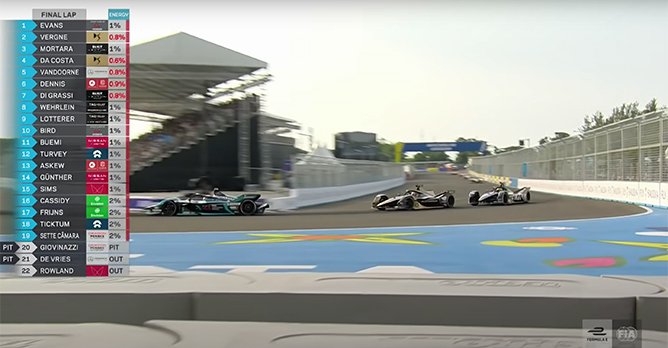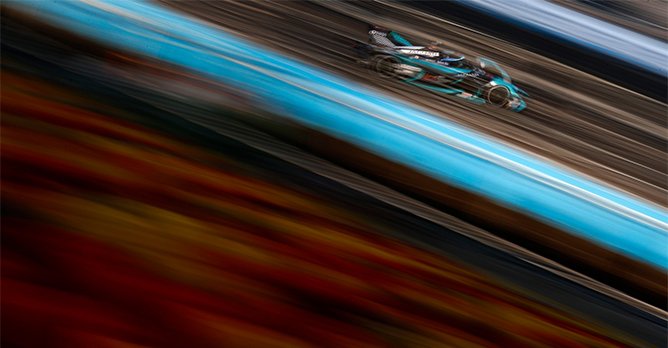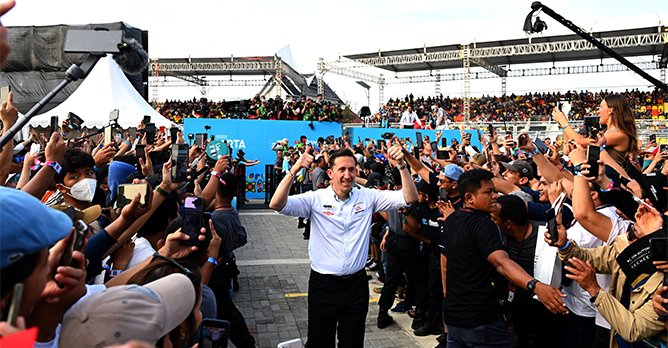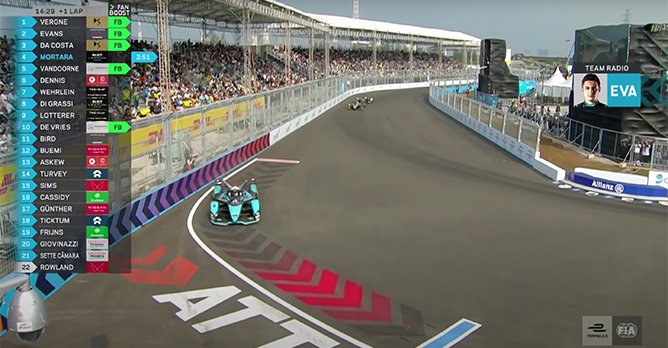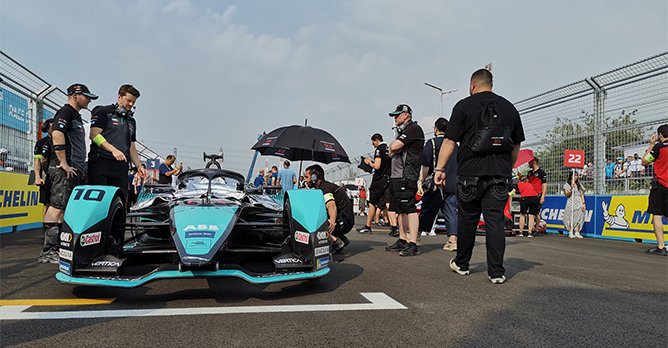No ear plugs needed: If the sounds are different, where does Formula E pack the excitement?
09 Jun 2022|3,030 views
At about 3:50pm - more than 45 minutes after the race-start - the air suddenly feels more still than it has been the entire day in the paddock club.
In his turquoise-black Jaguar I-Type 5, current race leader Mitch Evans is wrestling with significant wear on his rear tyres, but masterfully keeping the competition at bay. Yapping ferociously at his tail is DS Techeetah's Jean-Eric Vergne, followed by ROKiT Venturi's Edoardo Mortara - both waiting to pounce at the slightest show of weakness.
Certainly - final laps are hair-raising no matter the race, but there's something different on the screens here. To the right of the live-drivers' standings, a curious small column labelled 'ENERGY' has also been on display for the past few minutes. The digits have been black the entire race (creeping downwards from 100 at the start), but as the cars fly into their final half lap, Vergne's and Evans' numbers turn red: 0.9%... 0.8%...
But then the cars brake into a corner, and like magic, Evans' digits suddenly reverse upwards: To 0.9%, and then 1% again, back to black. Meanwhile, Vergne languishes in the red. As the gap in energy left widens, it soon becomes clear that the fight now has shifted: To the second and third cars for runner-up position. Sure enough, Evans will cross the line first - mere moments after - to emerge glorious alongside Jaguar TCS as champion of the inaugural Jakarta E-Prix.
A unique brand of unpredictability: Energy management meets sustainability
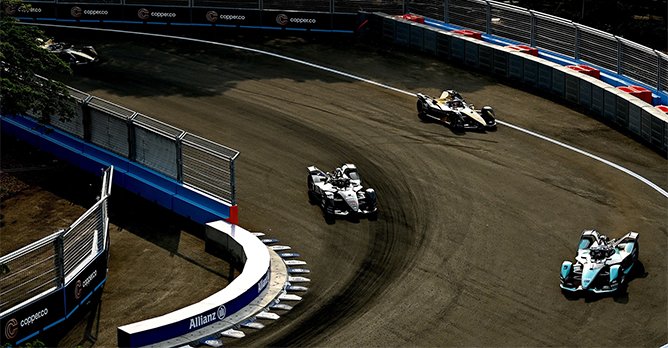
 Formula E cars bring with them incredible speeds too, while tackling the fun challenge of electrification In its eighth season now, Formula E should need no further introduction. Race after race, the drivers in the championship also take supersonic machines and their instant torque to the tarmac for cutthroat, sometimes wheel-to-wheel racing. Rather than combusting fuel and letting earplug-warranting revs rip like thunder, however, they and their teams contend with different challenges - wrought by the concomitant thrills and constraints of electric drivetrains.
Formula E cars bring with them incredible speeds too, while tackling the fun challenge of electrification In its eighth season now, Formula E should need no further introduction. Race after race, the drivers in the championship also take supersonic machines and their instant torque to the tarmac for cutthroat, sometimes wheel-to-wheel racing. Rather than combusting fuel and letting earplug-warranting revs rip like thunder, however, they and their teams contend with different challenges - wrought by the concomitant thrills and constraints of electric drivetrains.
That counts for a specific brand of unpredictability which, in turn, makes the race strategy in the E-Prix quite unique. Auckland-born Evans has raced cars in the GP2 and GP3 series before, and while he maintains that a racecar is still a racecar - considerations like damping, aero and suspension don't lose their relevance - regen-braking is "probably the biggest difference from a car behaviour point of view that we experience".
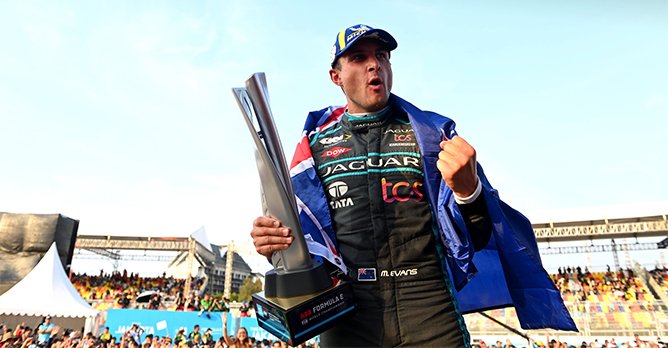
 Jaguar TCS' solid energy management strategy helped both its drivers gain positions in Jakarta - and sent Mitch Evans to the city's first E-Prix podium Regenerative braking doesn't just change how the driver tunes his inputs for the machine, but also plays into the final lap scenario mentioned above by putting power back into the batteries. In connection, a term that you'll hear getting thrown about quite frequently after hanging around just a single Formula E race is "energy management".
Jaguar TCS' solid energy management strategy helped both its drivers gain positions in Jakarta - and sent Mitch Evans to the city's first E-Prix podium Regenerative braking doesn't just change how the driver tunes his inputs for the machine, but also plays into the final lap scenario mentioned above by putting power back into the batteries. In connection, a term that you'll hear getting thrown about quite frequently after hanging around just a single Formula E race is "energy management".
With a race typically lasting upwards of just 45 minutes, there are no battery swaps nor recharging opportunities made available. (In other words too - no pit stops). What this means is that a driver could surely floor the pedal for the first 40 minutes, but then risk running out of power prematurely as everyone continues zipping ahead full-steam (or fully electric).
As Operations Manager for Jaguar TCS, Chris Shortt, tells us, "Performance isn't free. If we want to go faster, we have to be careful that we don't over-use energy which would then mean we won't get to finish the race."
Make no mistake; the cars are quick. Instant torque and 220kW of usable power in the race sends the current cars from 0-100km/h in 2.8 seconds, and the top speed of 280km/h now will get bumped to over 322km/h in next season's Gen 3 car. But having all this power in reserve only serves to exacerbate the tug-of-war between performance and efficiency further. According to James Barclay, the Team Principal of Jaguar TCS and Managing Director of JLR Motorsports, red-lining this tension is almost mandatory. "The threshold is always higher than you think; you always push harder before you come into trouble."
Although this head-splitting game is carefully calculated in advance, it continues to be reworked in real-time as it's brought to bear by each driver during a race. It's also what causes widened eyes, furrowed eyebrows and clammy palms, both in team garages and on spectator stands during a race.
Incredibly, in wanting to utilise every last bit of energy, teams aim to cross the line just as the battery is running down to zero percent, meaning that the winning car is literally supposed to roll across the line.
"Because that way, you've optimised everything," Barclay explains. "People say, 'Oh, why do you push it so far?' Well, if you didn't, and you ended with three percent, you were leaving pace on the table somewhere in a 45 minute race plus one lap."
To up the stakes, there are even a couple of features of the E-Prix that have been designed squarely to complicate this. Attack Mode sees the drivers' cars going from the normal maximum of 220kW, to 250kW of power for a short duration, yet this is no silver bullet, since activating it typically requires driving round the wider edge of a chicane, during which a position or two is often sacrificed.
Drivers also need to utilise it before the race ends or risk penalties, and because the number of Attack Modes and their durations change for each race, the energy portioning strategy needs to be adapted even further. (The more controversial Fan Boost throws another spanner into the overall energy calculations - in each race, five fan-voted drivers are also awarded a briefer, less significant power spike, but the teams only know who gets it mid-race.)
Further compounding the complexity of the race is another variable that changes across the race calendar: The weather. Drivers race in anything from one to forty degree weather, meaning watching the battery is key. You're not pushing enough if it remains too cold; too hot, and it shuts off.
Then - of course - comes the sustainability portion. To reduce resource consumption, only one type of tyre is also used in the championship; no slicks, intermediates, nor wets. Getting them into an optimum window and then maintaining them there (as Evans would know himself) can be tricky.
Learning the sport
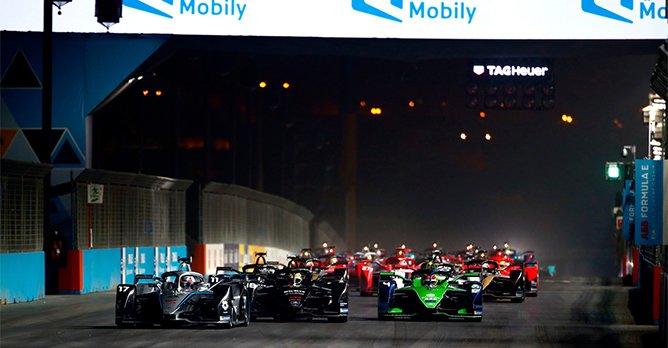
 Season start in Diriyah, Saudi Arabia: E-Prix is only in its 8th season, meaning it's still quite fresh and requires some time and effort to understand All these additional elements, admittedly, can sometimes threaten to overshadow attention towards what we think is the essence of motorsports: Speed.
Season start in Diriyah, Saudi Arabia: E-Prix is only in its 8th season, meaning it's still quite fresh and requires some time and effort to understand All these additional elements, admittedly, can sometimes threaten to overshadow attention towards what we think is the essence of motorsports: Speed.
In Formula One, you mostly focus only on the timings that separate drivers, the conditions of the track, as well as how many times a driver has pitted. When watching a Formula E race for the first time, however, one is confronted not just by the new electric sounds, but other new figures such as the duration of each driver's Attack Modes, and the aforementioned 'ENERGY' level numbers, which pop up next to the driver's standings at different points.
Still, once you've gotten the hang of it, the constituent parts added together genuinely form a watching experience that will set your heart racing.
Waiting for Jaguar TCS and Evans to activate his two Attack Modes during the race, I suddenly found myself forcing my chin down hard into my tightly clenched fists. When will the team take the next Attack? Can Mitch remain ahead? Will there be enough energy left? Then, to watch the strategy unfold towards the podium - and to erupt into cheers alongside the team in the paddock club - is made all the sweeter.
Seeing Formula E spill over into its larger peripheries with tangible, positive impact, also makes the sport more accessible and exciting. Fellow Jaguar TCS driver Sam Bird, who fought equally hard to gain five positions and finish ninth in Jakarta, is clear that although the drivers are "first and foremost… racing at the highest level we possibly can", the E-Prix is also a testbed for future technologies and thus "not just a super fun, competitive world championship sporting event".
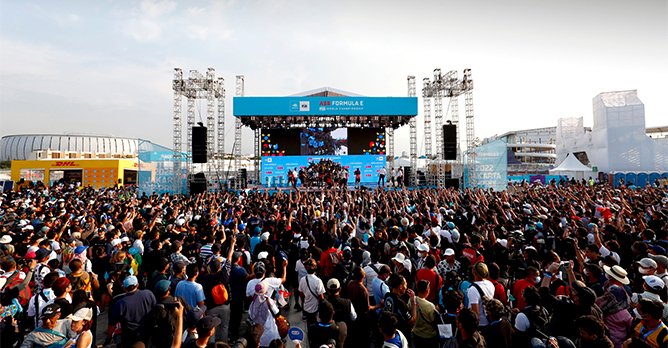
 Jakarta was thoroughly excited by its first ever E-Prix - tickets for the event were completely sold out Beyond that, the E-Prix is finally also a world tour of awareness-raising. Evans astutely points out that electrifying the cities that the E-Prix lands in is all the more meaningful for places like Jakarta, which still experiences heavy levels of air pollution, and isn't well-acquainted yet with EVs. "We're here to try and promote a healthier, better future for future generations, and we're trying to promote that on a sporting side."
Jakarta was thoroughly excited by its first ever E-Prix - tickets for the event were completely sold out Beyond that, the E-Prix is finally also a world tour of awareness-raising. Evans astutely points out that electrifying the cities that the E-Prix lands in is all the more meaningful for places like Jakarta, which still experiences heavy levels of air pollution, and isn't well-acquainted yet with EVs. "We're here to try and promote a healthier, better future for future generations, and we're trying to promote that on a sporting side."
Having basked briefly in the festive (and very humid) afterglow of the Jakarta E-Prix weekend, it is indisputable that a city is held captive to a huge surge of energy during the period in which a sporting event takes place - traffic jams included. How exactly 21st century motorsport intends to take advantage of that energy, however, is an open question left in the hands of each organiser.

 The E-Prix's excitement comes from its promise and its complexity - as long as you care to understand it The E-Prix most certainly took Jakarta by storm (or by lightning) over the weekend. Tickets for the race were sold out, and on the way to the airport, our driver gingerly asked if the two of us had taken any photos because he wanted to show them to his wife.
The E-Prix's excitement comes from its promise and its complexity - as long as you care to understand it The E-Prix most certainly took Jakarta by storm (or by lightning) over the weekend. Tickets for the race were sold out, and on the way to the airport, our driver gingerly asked if the two of us had taken any photos because he wanted to show them to his wife.
It is precisely this sort of infectious excitement executed via values trained in sustainability that defines Formula E. The championship teases out and gamifies the main tensions that come with electric power (range, battery management, sustainability), but more importantly, it brings it to the people - through transferring the growing sophistication of software and materials from track to production EVs, and by racing on the streets spanning Jakarta to Rome.
The sounds of an electric car may certainly take getting used to. But the excitement in Formula E comes from its complexity - as long as you care to understand it.
In his turquoise-black Jaguar I-Type 5, current race leader Mitch Evans is wrestling with significant wear on his rear tyres, but masterfully keeping the competition at bay. Yapping ferociously at his tail is DS Techeetah's Jean-Eric Vergne, followed by ROKiT Venturi's Edoardo Mortara - both waiting to pounce at the slightest show of weakness.
Certainly - final laps are hair-raising no matter the race, but there's something different on the screens here. To the right of the live-drivers' standings, a curious small column labelled 'ENERGY' has also been on display for the past few minutes. The digits have been black the entire race (creeping downwards from 100 at the start), but as the cars fly into their final half lap, Vergne's and Evans' numbers turn red: 0.9%... 0.8%...
But then the cars brake into a corner, and like magic, Evans' digits suddenly reverse upwards: To 0.9%, and then 1% again, back to black. Meanwhile, Vergne languishes in the red. As the gap in energy left widens, it soon becomes clear that the fight now has shifted: To the second and third cars for runner-up position. Sure enough, Evans will cross the line first - mere moments after - to emerge glorious alongside Jaguar TCS as champion of the inaugural Jakarta E-Prix.
A unique brand of unpredictability: Energy management meets sustainability

That counts for a specific brand of unpredictability which, in turn, makes the race strategy in the E-Prix quite unique. Auckland-born Evans has raced cars in the GP2 and GP3 series before, and while he maintains that a racecar is still a racecar - considerations like damping, aero and suspension don't lose their relevance - regen-braking is "probably the biggest difference from a car behaviour point of view that we experience".

With a race typically lasting upwards of just 45 minutes, there are no battery swaps nor recharging opportunities made available. (In other words too - no pit stops). What this means is that a driver could surely floor the pedal for the first 40 minutes, but then risk running out of power prematurely as everyone continues zipping ahead full-steam (or fully electric).
As Operations Manager for Jaguar TCS, Chris Shortt, tells us, "Performance isn't free. If we want to go faster, we have to be careful that we don't over-use energy which would then mean we won't get to finish the race."
Make no mistake; the cars are quick. Instant torque and 220kW of usable power in the race sends the current cars from 0-100km/h in 2.8 seconds, and the top speed of 280km/h now will get bumped to over 322km/h in next season's Gen 3 car. But having all this power in reserve only serves to exacerbate the tug-of-war between performance and efficiency further. According to James Barclay, the Team Principal of Jaguar TCS and Managing Director of JLR Motorsports, red-lining this tension is almost mandatory. "The threshold is always higher than you think; you always push harder before you come into trouble."
Although this head-splitting game is carefully calculated in advance, it continues to be reworked in real-time as it's brought to bear by each driver during a race. It's also what causes widened eyes, furrowed eyebrows and clammy palms, both in team garages and on spectator stands during a race.
Incredibly, in wanting to utilise every last bit of energy, teams aim to cross the line just as the battery is running down to zero percent, meaning that the winning car is literally supposed to roll across the line.
"Because that way, you've optimised everything," Barclay explains. "People say, 'Oh, why do you push it so far?' Well, if you didn't, and you ended with three percent, you were leaving pace on the table somewhere in a 45 minute race plus one lap."
To up the stakes, there are even a couple of features of the E-Prix that have been designed squarely to complicate this. Attack Mode sees the drivers' cars going from the normal maximum of 220kW, to 250kW of power for a short duration, yet this is no silver bullet, since activating it typically requires driving round the wider edge of a chicane, during which a position or two is often sacrificed.
Drivers also need to utilise it before the race ends or risk penalties, and because the number of Attack Modes and their durations change for each race, the energy portioning strategy needs to be adapted even further. (The more controversial Fan Boost throws another spanner into the overall energy calculations - in each race, five fan-voted drivers are also awarded a briefer, less significant power spike, but the teams only know who gets it mid-race.)
Further compounding the complexity of the race is another variable that changes across the race calendar: The weather. Drivers race in anything from one to forty degree weather, meaning watching the battery is key. You're not pushing enough if it remains too cold; too hot, and it shuts off.
Then - of course - comes the sustainability portion. To reduce resource consumption, only one type of tyre is also used in the championship; no slicks, intermediates, nor wets. Getting them into an optimum window and then maintaining them there (as Evans would know himself) can be tricky.
Learning the sport

In Formula One, you mostly focus only on the timings that separate drivers, the conditions of the track, as well as how many times a driver has pitted. When watching a Formula E race for the first time, however, one is confronted not just by the new electric sounds, but other new figures such as the duration of each driver's Attack Modes, and the aforementioned 'ENERGY' level numbers, which pop up next to the driver's standings at different points.
Still, once you've gotten the hang of it, the constituent parts added together genuinely form a watching experience that will set your heart racing.
Waiting for Jaguar TCS and Evans to activate his two Attack Modes during the race, I suddenly found myself forcing my chin down hard into my tightly clenched fists. When will the team take the next Attack? Can Mitch remain ahead? Will there be enough energy left? Then, to watch the strategy unfold towards the podium - and to erupt into cheers alongside the team in the paddock club - is made all the sweeter.
Seeing Formula E spill over into its larger peripheries with tangible, positive impact, also makes the sport more accessible and exciting. Fellow Jaguar TCS driver Sam Bird, who fought equally hard to gain five positions and finish ninth in Jakarta, is clear that although the drivers are "first and foremost… racing at the highest level we possibly can", the E-Prix is also a testbed for future technologies and thus "not just a super fun, competitive world championship sporting event".

Having basked briefly in the festive (and very humid) afterglow of the Jakarta E-Prix weekend, it is indisputable that a city is held captive to a huge surge of energy during the period in which a sporting event takes place - traffic jams included. How exactly 21st century motorsport intends to take advantage of that energy, however, is an open question left in the hands of each organiser.

It is precisely this sort of infectious excitement executed via values trained in sustainability that defines Formula E. The championship teases out and gamifies the main tensions that come with electric power (range, battery management, sustainability), but more importantly, it brings it to the people - through transferring the growing sophistication of software and materials from track to production EVs, and by racing on the streets spanning Jakarta to Rome.
The sounds of an electric car may certainly take getting used to. But the excitement in Formula E comes from its complexity - as long as you care to understand it.
At about 3:50pm - more than 45 minutes after the race-start - the air suddenly feels more still than it has been the entire day in the paddock club.
In his turquoise-black Jaguar I-Type 5, current race leader Mitch Evans is wrestling with significant wear on his rear tyres, but masterfully keeping the competition at bay. Yapping ferociously at his tail is DS Techeetah's Jean-Eric Vergne, followed by ROKiT Venturi's Edoardo Mortara - both waiting to pounce at the slightest show of weakness.
Certainly - final laps are hair-raising no matter the race, but there's something different on the screens here. To the right of the live-drivers' standings, a curious small column labelled 'ENERGY' has also been on display for the past few minutes. The digits have been black the entire race (creeping downwards from 100 at the start), but as the cars fly into their final half lap, Vergne's and Evans' numbers turn red: 0.9%... 0.8%...
But then the cars brake into a corner, and like magic, Evans' digits suddenly reverse upwards: To 0.9%, and then 1% again, back to black. Meanwhile, Vergne languishes in the red. As the gap in energy left widens, it soon becomes clear that the fight now has shifted: To the second and third cars for runner-up position. Sure enough, Evans will cross the line first - mere moments after - to emerge glorious alongside Jaguar TCS as champion of the inaugural Jakarta E-Prix.
A unique brand of unpredictability: Energy management meets sustainability

 Formula E cars bring with them incredible speeds too, while tackling the fun challenge of electrification In its eighth season now, Formula E should need no further introduction. Race after race, the drivers in the championship also take supersonic machines and their instant torque to the tarmac for cutthroat, sometimes wheel-to-wheel racing. Rather than combusting fuel and letting earplug-warranting revs rip like thunder, however, they and their teams contend with different challenges - wrought by the concomitant thrills and constraints of electric drivetrains.
Formula E cars bring with them incredible speeds too, while tackling the fun challenge of electrification In its eighth season now, Formula E should need no further introduction. Race after race, the drivers in the championship also take supersonic machines and their instant torque to the tarmac for cutthroat, sometimes wheel-to-wheel racing. Rather than combusting fuel and letting earplug-warranting revs rip like thunder, however, they and their teams contend with different challenges - wrought by the concomitant thrills and constraints of electric drivetrains.
That counts for a specific brand of unpredictability which, in turn, makes the race strategy in the E-Prix quite unique. Auckland-born Evans has raced cars in the GP2 and GP3 series before, and while he maintains that a racecar is still a racecar - considerations like damping, aero and suspension don't lose their relevance - regen-braking is "probably the biggest difference from a car behaviour point of view that we experience".

 Jaguar TCS' solid energy management strategy helped both its drivers gain positions in Jakarta - and sent Mitch Evans to the city's first E-Prix podium Regenerative braking doesn't just change how the driver tunes his inputs for the machine, but also plays into the final lap scenario mentioned above by putting power back into the batteries. In connection, a term that you'll hear getting thrown about quite frequently after hanging around just a single Formula E race is "energy management".
Jaguar TCS' solid energy management strategy helped both its drivers gain positions in Jakarta - and sent Mitch Evans to the city's first E-Prix podium Regenerative braking doesn't just change how the driver tunes his inputs for the machine, but also plays into the final lap scenario mentioned above by putting power back into the batteries. In connection, a term that you'll hear getting thrown about quite frequently after hanging around just a single Formula E race is "energy management".
With a race typically lasting upwards of just 45 minutes, there are no battery swaps nor recharging opportunities made available. (In other words too - no pit stops). What this means is that a driver could surely floor the pedal for the first 40 minutes, but then risk running out of power prematurely as everyone continues zipping ahead full-steam (or fully electric).
As Operations Manager for Jaguar TCS, Chris Shortt, tells us, "Performance isn't free. If we want to go faster, we have to be careful that we don't over-use energy which would then mean we won't get to finish the race."
Make no mistake; the cars are quick. Instant torque and 220kW of usable power in the race sends the current cars from 0-100km/h in 2.8 seconds, and the top speed of 280km/h now will get bumped to over 322km/h in next season's Gen 3 car. But having all this power in reserve only serves to exacerbate the tug-of-war between performance and efficiency further. According to James Barclay, the Team Principal of Jaguar TCS and Managing Director of JLR Motorsports, red-lining this tension is almost mandatory. "The threshold is always higher than you think; you always push harder before you come into trouble."
Although this head-splitting game is carefully calculated in advance, it continues to be reworked in real-time as it's brought to bear by each driver during a race. It's also what causes widened eyes, furrowed eyebrows and clammy palms, both in team garages and on spectator stands during a race.
Incredibly, in wanting to utilise every last bit of energy, teams aim to cross the line just as the battery is running down to zero percent, meaning that the winning car is literally supposed to roll across the line.
"Because that way, you've optimised everything," Barclay explains. "People say, 'Oh, why do you push it so far?' Well, if you didn't, and you ended with three percent, you were leaving pace on the table somewhere in a 45 minute race plus one lap."
To up the stakes, there are even a couple of features of the E-Prix that have been designed squarely to complicate this. Attack Mode sees the drivers' cars going from the normal maximum of 220kW, to 250kW of power for a short duration, yet this is no silver bullet, since activating it typically requires driving round the wider edge of a chicane, during which a position or two is often sacrificed.
Drivers also need to utilise it before the race ends or risk penalties, and because the number of Attack Modes and their durations change for each race, the energy portioning strategy needs to be adapted even further. (The more controversial Fan Boost throws another spanner into the overall energy calculations - in each race, five fan-voted drivers are also awarded a briefer, less significant power spike, but the teams only know who gets it mid-race.)
Further compounding the complexity of the race is another variable that changes across the race calendar: The weather. Drivers race in anything from one to forty degree weather, meaning watching the battery is key. You're not pushing enough if it remains too cold; too hot, and it shuts off.
Then - of course - comes the sustainability portion. To reduce resource consumption, only one type of tyre is also used in the championship; no slicks, intermediates, nor wets. Getting them into an optimum window and then maintaining them there (as Evans would know himself) can be tricky.
Learning the sport

 Season start in Diriyah, Saudi Arabia: E-Prix is only in its 8th season, meaning it's still quite fresh and requires some time and effort to understand All these additional elements, admittedly, can sometimes threaten to overshadow attention towards what we think is the essence of motorsports: Speed.
Season start in Diriyah, Saudi Arabia: E-Prix is only in its 8th season, meaning it's still quite fresh and requires some time and effort to understand All these additional elements, admittedly, can sometimes threaten to overshadow attention towards what we think is the essence of motorsports: Speed.
In Formula One, you mostly focus only on the timings that separate drivers, the conditions of the track, as well as how many times a driver has pitted. When watching a Formula E race for the first time, however, one is confronted not just by the new electric sounds, but other new figures such as the duration of each driver's Attack Modes, and the aforementioned 'ENERGY' level numbers, which pop up next to the driver's standings at different points.
Still, once you've gotten the hang of it, the constituent parts added together genuinely form a watching experience that will set your heart racing.
Waiting for Jaguar TCS and Evans to activate his two Attack Modes during the race, I suddenly found myself forcing my chin down hard into my tightly clenched fists. When will the team take the next Attack? Can Mitch remain ahead? Will there be enough energy left? Then, to watch the strategy unfold towards the podium - and to erupt into cheers alongside the team in the paddock club - is made all the sweeter.
Seeing Formula E spill over into its larger peripheries with tangible, positive impact, also makes the sport more accessible and exciting. Fellow Jaguar TCS driver Sam Bird, who fought equally hard to gain five positions and finish ninth in Jakarta, is clear that although the drivers are "first and foremost… racing at the highest level we possibly can", the E-Prix is also a testbed for future technologies and thus "not just a super fun, competitive world championship sporting event".

 Jakarta was thoroughly excited by its first ever E-Prix - tickets for the event were completely sold out Beyond that, the E-Prix is finally also a world tour of awareness-raising. Evans astutely points out that electrifying the cities that the E-Prix lands in is all the more meaningful for places like Jakarta, which still experiences heavy levels of air pollution, and isn't well-acquainted yet with EVs. "We're here to try and promote a healthier, better future for future generations, and we're trying to promote that on a sporting side."
Jakarta was thoroughly excited by its first ever E-Prix - tickets for the event were completely sold out Beyond that, the E-Prix is finally also a world tour of awareness-raising. Evans astutely points out that electrifying the cities that the E-Prix lands in is all the more meaningful for places like Jakarta, which still experiences heavy levels of air pollution, and isn't well-acquainted yet with EVs. "We're here to try and promote a healthier, better future for future generations, and we're trying to promote that on a sporting side."
Having basked briefly in the festive (and very humid) afterglow of the Jakarta E-Prix weekend, it is indisputable that a city is held captive to a huge surge of energy during the period in which a sporting event takes place - traffic jams included. How exactly 21st century motorsport intends to take advantage of that energy, however, is an open question left in the hands of each organiser.

 The E-Prix's excitement comes from its promise and its complexity - as long as you care to understand it The E-Prix most certainly took Jakarta by storm (or by lightning) over the weekend. Tickets for the race were sold out, and on the way to the airport, our driver gingerly asked if the two of us had taken any photos because he wanted to show them to his wife.
The E-Prix's excitement comes from its promise and its complexity - as long as you care to understand it The E-Prix most certainly took Jakarta by storm (or by lightning) over the weekend. Tickets for the race were sold out, and on the way to the airport, our driver gingerly asked if the two of us had taken any photos because he wanted to show them to his wife.
It is precisely this sort of infectious excitement executed via values trained in sustainability that defines Formula E. The championship teases out and gamifies the main tensions that come with electric power (range, battery management, sustainability), but more importantly, it brings it to the people - through transferring the growing sophistication of software and materials from track to production EVs, and by racing on the streets spanning Jakarta to Rome.
The sounds of an electric car may certainly take getting used to. But the excitement in Formula E comes from its complexity - as long as you care to understand it.
In his turquoise-black Jaguar I-Type 5, current race leader Mitch Evans is wrestling with significant wear on his rear tyres, but masterfully keeping the competition at bay. Yapping ferociously at his tail is DS Techeetah's Jean-Eric Vergne, followed by ROKiT Venturi's Edoardo Mortara - both waiting to pounce at the slightest show of weakness.
Certainly - final laps are hair-raising no matter the race, but there's something different on the screens here. To the right of the live-drivers' standings, a curious small column labelled 'ENERGY' has also been on display for the past few minutes. The digits have been black the entire race (creeping downwards from 100 at the start), but as the cars fly into their final half lap, Vergne's and Evans' numbers turn red: 0.9%... 0.8%...
But then the cars brake into a corner, and like magic, Evans' digits suddenly reverse upwards: To 0.9%, and then 1% again, back to black. Meanwhile, Vergne languishes in the red. As the gap in energy left widens, it soon becomes clear that the fight now has shifted: To the second and third cars for runner-up position. Sure enough, Evans will cross the line first - mere moments after - to emerge glorious alongside Jaguar TCS as champion of the inaugural Jakarta E-Prix.
A unique brand of unpredictability: Energy management meets sustainability

That counts for a specific brand of unpredictability which, in turn, makes the race strategy in the E-Prix quite unique. Auckland-born Evans has raced cars in the GP2 and GP3 series before, and while he maintains that a racecar is still a racecar - considerations like damping, aero and suspension don't lose their relevance - regen-braking is "probably the biggest difference from a car behaviour point of view that we experience".

With a race typically lasting upwards of just 45 minutes, there are no battery swaps nor recharging opportunities made available. (In other words too - no pit stops). What this means is that a driver could surely floor the pedal for the first 40 minutes, but then risk running out of power prematurely as everyone continues zipping ahead full-steam (or fully electric).
As Operations Manager for Jaguar TCS, Chris Shortt, tells us, "Performance isn't free. If we want to go faster, we have to be careful that we don't over-use energy which would then mean we won't get to finish the race."
Make no mistake; the cars are quick. Instant torque and 220kW of usable power in the race sends the current cars from 0-100km/h in 2.8 seconds, and the top speed of 280km/h now will get bumped to over 322km/h in next season's Gen 3 car. But having all this power in reserve only serves to exacerbate the tug-of-war between performance and efficiency further. According to James Barclay, the Team Principal of Jaguar TCS and Managing Director of JLR Motorsports, red-lining this tension is almost mandatory. "The threshold is always higher than you think; you always push harder before you come into trouble."
Although this head-splitting game is carefully calculated in advance, it continues to be reworked in real-time as it's brought to bear by each driver during a race. It's also what causes widened eyes, furrowed eyebrows and clammy palms, both in team garages and on spectator stands during a race.
Incredibly, in wanting to utilise every last bit of energy, teams aim to cross the line just as the battery is running down to zero percent, meaning that the winning car is literally supposed to roll across the line.
"Because that way, you've optimised everything," Barclay explains. "People say, 'Oh, why do you push it so far?' Well, if you didn't, and you ended with three percent, you were leaving pace on the table somewhere in a 45 minute race plus one lap."
To up the stakes, there are even a couple of features of the E-Prix that have been designed squarely to complicate this. Attack Mode sees the drivers' cars going from the normal maximum of 220kW, to 250kW of power for a short duration, yet this is no silver bullet, since activating it typically requires driving round the wider edge of a chicane, during which a position or two is often sacrificed.
Drivers also need to utilise it before the race ends or risk penalties, and because the number of Attack Modes and their durations change for each race, the energy portioning strategy needs to be adapted even further. (The more controversial Fan Boost throws another spanner into the overall energy calculations - in each race, five fan-voted drivers are also awarded a briefer, less significant power spike, but the teams only know who gets it mid-race.)
Further compounding the complexity of the race is another variable that changes across the race calendar: The weather. Drivers race in anything from one to forty degree weather, meaning watching the battery is key. You're not pushing enough if it remains too cold; too hot, and it shuts off.
Then - of course - comes the sustainability portion. To reduce resource consumption, only one type of tyre is also used in the championship; no slicks, intermediates, nor wets. Getting them into an optimum window and then maintaining them there (as Evans would know himself) can be tricky.
Learning the sport

In Formula One, you mostly focus only on the timings that separate drivers, the conditions of the track, as well as how many times a driver has pitted. When watching a Formula E race for the first time, however, one is confronted not just by the new electric sounds, but other new figures such as the duration of each driver's Attack Modes, and the aforementioned 'ENERGY' level numbers, which pop up next to the driver's standings at different points.
Still, once you've gotten the hang of it, the constituent parts added together genuinely form a watching experience that will set your heart racing.
Waiting for Jaguar TCS and Evans to activate his two Attack Modes during the race, I suddenly found myself forcing my chin down hard into my tightly clenched fists. When will the team take the next Attack? Can Mitch remain ahead? Will there be enough energy left? Then, to watch the strategy unfold towards the podium - and to erupt into cheers alongside the team in the paddock club - is made all the sweeter.
Seeing Formula E spill over into its larger peripheries with tangible, positive impact, also makes the sport more accessible and exciting. Fellow Jaguar TCS driver Sam Bird, who fought equally hard to gain five positions and finish ninth in Jakarta, is clear that although the drivers are "first and foremost… racing at the highest level we possibly can", the E-Prix is also a testbed for future technologies and thus "not just a super fun, competitive world championship sporting event".

Having basked briefly in the festive (and very humid) afterglow of the Jakarta E-Prix weekend, it is indisputable that a city is held captive to a huge surge of energy during the period in which a sporting event takes place - traffic jams included. How exactly 21st century motorsport intends to take advantage of that energy, however, is an open question left in the hands of each organiser.

It is precisely this sort of infectious excitement executed via values trained in sustainability that defines Formula E. The championship teases out and gamifies the main tensions that come with electric power (range, battery management, sustainability), but more importantly, it brings it to the people - through transferring the growing sophistication of software and materials from track to production EVs, and by racing on the streets spanning Jakarta to Rome.
The sounds of an electric car may certainly take getting used to. But the excitement in Formula E comes from its complexity - as long as you care to understand it.
Thank You For Your Subscription.











